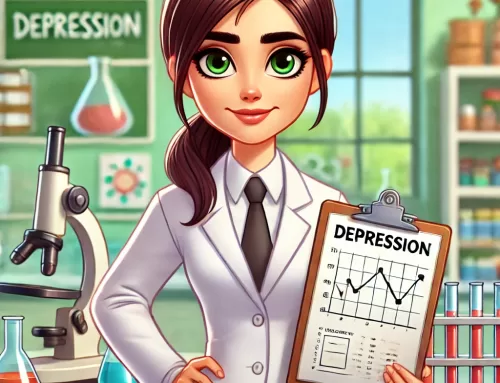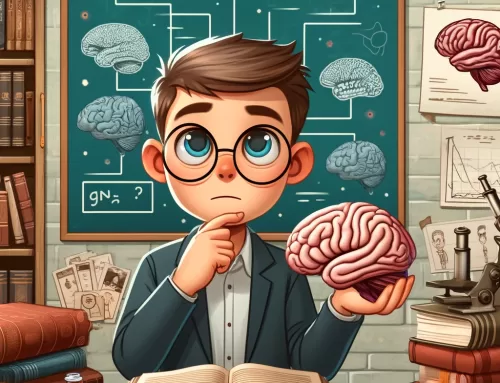 Researchers first administered a stress test to 73 dog owners in the United States, then assigned them to one of three conditions: experimental (interacting with their dogs), active control (a stress-reducing coloring activity), or inactive control (waiting quietly). Participants who spent time with their dogs after undergoing a stressful task experienced increased mood and reduced anxiety compared with the two control groups, regardless of the participants’ prior experiences with dogs, attitudes toward dogs, and the characteristics of their own dogs. Specific behaviors during the interactions, including physical touch, were not associated with mood outcomes, but total time spent actively engaging with the dog was.
Researchers first administered a stress test to 73 dog owners in the United States, then assigned them to one of three conditions: experimental (interacting with their dogs), active control (a stress-reducing coloring activity), or inactive control (waiting quietly). Participants who spent time with their dogs after undergoing a stressful task experienced increased mood and reduced anxiety compared with the two control groups, regardless of the participants’ prior experiences with dogs, attitudes toward dogs, and the characteristics of their own dogs. Specific behaviors during the interactions, including physical touch, were not associated with mood outcomes, but total time spent actively engaging with the dog was.
DOI: 10.1037/emo0001256
Failing the boredom test
Students’ boredom during tests can negatively impact exam results, suggests a study in the Journal of Educational Psychology. Across two studies, researchers surveyed 1,820 German students in Grades 5 through 10 about the extent of their boredom during math exams, the difficulty of the questions, and the personal relevance of the material on which they were being tested. They found that more than 50% of the students reported being bored during tests. Boredom during easy tasks had no effect on achievement, likely because students had sufficient cognitive and motivational resources to complete the tasks anyway. However, when the questions were hard, participants reporting more boredom performed worse than those reporting being more engaged. The researchers offered two recommendations to help overcome boredom and bring out the best in students during exams: Teachers should prepare exam questions relevant to their students’ lives and aim for an appropriate level of difficulty—one that is neither too challenging nor too easy.
DOI: 10.1037/edu0000807
Favorable ideas generated faster
According to research in American Psychologist, when tasked with being creative, the more people like their ideas, the faster they provide them. Researchers invited 71 participants in France to take a free association test, which consisted of matching words in the most audacious ways possible. They then asked the participants to rate how much they liked the associations they came up with and whether they seemed relevant and original. The researchers found that participants more quickly formulated ideas they later rated as liking more. They also noted that participants’ preferences for ideas were driven by a combination of relevance and originality. In addition, the researchers built a computational model that predicted the speed and quality of participants’ creative proposals based on the qualities of their valued ideas, which were measured in a separate task.
DOI: 10.1037/amp0001165
A warning about content warnings
Content warnings—notes that warn readers or viewers that they could find certain content distressing—don’t decrease distress but instead could cause it, suggests research in Clinical Psychological Science. Researchers analyzed 12 studies that explored the effectiveness of content warnings. They found that warnings made no meaningful difference on participants’ affect or educational outcomes in response to negative material. Warnings did, however, increase feelings of anxiety ahead of viewing the content. Findings on whether content warnings increased avoidance were mixed, for some warnings had no effect on participants’ engagement with negative material while other warnings increased engagement in certain cases.
DOI: 10.1177/21677026231186625
Altering brain wave frequency relieves depression
Deep transcranial magnetic stimulation (TMS) improves depression by reducing excessive slow-frequency waves in the prefrontal cortex, suggests a study in the Journal of Affective Disorders. Deep TMS is a procedure involving use of a noninvasive device that generates magnetic fields to stimulate specific deep brain regions. Over the course of 9 weeks, researchers administered 36 deep TMS sessions to each of 44 participants diagnosed with major depressive disorder in the United States. In each session, participants received two treatments targeting different regions of the brain. Participants underwent quantitative electroencephalography (QEEG) to measure brain waves before the first and after the last deep TMS session. Participants reported significant reduction in depressive symptoms after the treatment compared with pretreatment. The posttreatment QEEG recordings showed reduced slow-frequency brain activity (delta and theta waves) in the prefrontal cortex compared with pretreatment recordings.
DOI: 10.1016/j.jad.2023.05.066
Blood proteins foreshadow Alzheimer’s
According to a study in Science Translational Medicine, abnormal levels of certain proteins—many with functions unrelated to the brain—could be an early sign of Alzheimer’s disease. Researchers examined the relationship between the abundance of 4,877 proteins in the blood and dementia risk over a 25-year follow-up period in 10,981 adults ages 45 to 65 in the United States. About 1 in 5 participants developed Alzheimer’s over the study period. The researchers’ analysis identified 32 dementia-associated plasma proteins that were involved in protein regulation, immunity, synaptic function, and extracellular matrix organization. Eight of these candidate protein markers were abnormally expressed in human postmortem brain tissue from patients with Alzheimer’s. Using network analyses, the researchers found a protein signature for dementia risk that was characterized by dysregulation of specific immune and protein regulation pathways in adults about 20 years before dementia onset as well as abnormal coagulation about 10 years before onset.
DOI: 10.1126/scitranslmed.adf5681
Social isolation and brain age
According to a study in Psychological Medicine, the brains of socially isolated adults age faster than nonisolated adults. Researchers used data from an ongoing longitudinal investigation of all individuals born in New Zealand between April 1, 1972, and March 31, 1973. The study included assessments at multiple ages, from childhood (ages 5 to 11) to adulthood (ages 26 to 38), tracking each individual’s social isolation status. The researchers also estimated participants’ brain health at age 45 using structural MRI data. They found that individuals who experienced social isolation only in adulthood have an estimated brain age that is 1.73 years older on average than those who never experienced isolation. By contrast, experiencing social isolation exclusively during childhood was not associated with faster brain aging.
DOI: 10.1017/S0033291723001964
Large increase in mental health spending
Mental health spending exploded during the COVID-19 pandemic, as telehealth options made services more accessible, indicates a study in JAMA Health Forum. Researchers examined 1,554,895 claims from about seven million commercially insured adults in the United States from January 2019 through August 2022. During the acute phase of the pandemic (March 2020 to December 2020), in-person mental health services declined by 39.5% while telemental health services increased roughly tenfold (1,019.3%) compared with the prior year. Overall, there was a 22.3% increase in use of mental health services during the period. During the postacute period (December 2020 to August 2022), telemental health service use stabilized at roughly 10 times (1,068.3%) prepandemic levels. By August 2022, in-person mental services had returned to 79.9% of prepandemic levels. Overall, mental health service use in August 2022 was nearly 38.8% higher than before the pandemic. The average postacute mental health spending each month per 10,000 beneficiaries was more than $3.5 million compared with about $2.3 million during the prepandemic period (a 53.7% increase).
DOI: 10.1001/jamahealthforum.2023.2645
The path of social anxiety
When choosing how to behave in socially challenging situations, people who are anxious use a different region of their prefrontal cortex than people who are not anxious, according to a study in Nature Communications. Researchers presented 96 participants in the Netherlands, about half of whom experienced high levels of anxiety, with the task of using a joystick to approach happy faces and avoid angry ones. Then the task switched—approach angry faces and avoid happy ones—forcing participants to control the automatic tendency to avoid negative situations. Anxious participants performed just as well as nonanxious participants in this simple task. However, fMRI brain scans of nonanxious participants, performed during the second task, revealed signaling between the foremost prefrontal cortex region and the motor cortex—a direct, thus more efficient, neural pathway. Anxious individuals relied on indirect, less efficient neural paths running through the dorsolateral and medial prefrontal areas. A different imaging protocol tracking the neurochemical GABA indicated that this inefficiency likely occurs because the more suitable neural path becomes overstimulated in anxious people.
DOI: 10.1038/s41467-023-40666-3
Shift work linked to cognitive impairment
Middle-age and older adult shift workers are at an increased risk of cognitive impairment, according to a study in PLOS ONE. Researchers analyzed data from a longitudinal study of 47,811 Canadian adults ages 45 to 85. Overall, 21% reported having conducted some kind of shift work—any work schedule that occurs outside the traditional 9 a.m. to 5 p.m. working hours—over their career. Higher rates of cognitive impairment were found among participants who reported working night shifts for their current job or during the job they had held the longest compared with those who only reported working during daytime hours. Specifically, night shift work was associated with memory function impairment, and rotating shift work was associated with impairment of executive function when compared with daytime workers.
DOI: 10.1371/journal.pone.0289718
Fewer medical residents experience PTSD
First-year medical residents trained during the first wave of the COVID-19 pandemic were less likely to experience posttraumatic stress disorder (PTSD) symptoms than residents trained before the pandemic, according to a study in JAMA Network Open. Researchers analyzed two waves of data (2018 to 2019 and 2019 to 2020) from a longitudinal cohort study of first-year resident physicians in the United States (1,137 and 820 participants, respectively). Compared with residents trained prepandemic, residents trained during the pandemic were significantly less likely to screen positive for PTSD (7.1% versus 10.7%) and workplace trauma exposure (50.9% versus 56.6%), researchers found. Residents trained during the pandemic reported 3.1 fewer weekly duty hours, lower mean reports of medical errors, and higher workload satisfaction, suggesting those factors as potential targets for future interventions against PTSD.
DOI: 10.1001/jamanetworkopen.2023.30241
ADHD DX, RX skyrocketing in men
A study in BJPsych Open revealed a 20-fold increase in ADHD diagnoses (DX) in U.K. men ages 18 to 29 from 2000 to 2018, with a nearly 50-fold increase in prescriptions. Researchers reviewed medical data from seven million individuals ages 3 to 99 in a U.K. primary care database. Of these individuals, 35,877 had an ADHD diagnosis and 18,518 received prescriptions for ADHD medication from their primary-care physician. Among boys ages 10 to 16, 1.4% had an ADHD diagnosis and 0.6% had been prescribed ADHD medication in 2000, rising to 3.5% and 2.4%, respectively, in 2018. During that same period, men between the ages of 18 and 29 saw a 20-fold increase in ADHD diagnoses (from about 0.025% to 0.5%) and a nearly 50-fold increase in ADHD prescriptions (from about 0.01% to 0.56%). There were no significant increases, however, in children under 5.
DOI: 10.1192/bjo.2023.512
Bosses influence receptivity to fake news
Research in Scientific Reports suggests that individuals with authoritarian bosses are more likely to agree with fake news. Researchers asked 501 respondents in the United Kingdom, United States, Australia, and Canada to categorize their immediate superior as autonomous, paternalistic, or authoritarian. Participants then assessed the accuracy of four fake news headlines and imagined that their boss had shared one of these articles on social media. The researchers found that participants with authoritarian and paternalistic bosses were more likely to agree with fake news compared with those with autonomous supervisors, though the effect was stronger with authoritarian bosses. Those with authoritarian bosses also tended to rate fake news articles as more accurate compared with participants with autonomous leaders. The findings remained consistent even after controlling for various factors, such as the perceived competence of the leader, transformational leadership, demographics, and political ideology.
DOI: 10.1038/s41598-023-39807-x
EHR message overload
According to a study in JAMA Network Open, the number of electronic health record (EHR) messages patients sent increased eightfold during the COVID-19 pandemic. Researchers analyzed EHRs of 4,724 outpatients receiving psychiatric treatment at a large academic medical center in the United States. They tallied all patient-initiated messages prepandemic (June 2, 2018, to March 18, 2020) and midpandemic (March 19, 2020, to January 3, 2022) for patients with at least one scheduled appointment in either period. The researchers found the total monthly message volume increased from 4,661 in the prepandemic period to 44,929 in the midpandemic period, an increase of 861.5%. Message rates increased even when COVID-19 infection rates went down and patients could go to appointments in person. Patients identifying as White were more likely to send messages before and during the pandemic. Men were more likely than women to send messages prepandemic, but that trend reversed during the pandemic.
DOI: 10.1001/jamanetworkopen.2023.25202
MDMA PTSD study replicated
Psychotherapy in combination with MDMA, also known as molly or ecstasy, proved safe and effective in treating posttraumatic stress disorder (PTSD) symptoms in a diverse patient population, according to findings from a Phase 3 randomized study in Nature Medicine. Researchers randomly assigned 104 participants in the United States (about 23% with moderate PTSD and about 77% with severe PTSD) to either an MDMA-plus-conventional-psychotherapy group or a psychotherapy-only group. They found that 71% of people who received MDMA alongside therapy lost their PTSD diagnosis compared with 48% of those who received a placebo and therapy. The drug seemed to work just as well in people who had other mental illnesses, such as depression, and in those who’d had PTSD for a long time (i.e., an average of 16 years). These results replicated the findings of a previous Phase 3 trial of MDMA published in 2021, expanding on that study by showing that the drug seems to work equally well across racial and ethnic groups.
DOI: 10.1038/s41591-023-02565-4
More mental health issues for food-insecure children
Children living in food-insecure households had a 55% higher frequency of physician visits for mental health reasons than those with enough food at home, according to a study in the Canadian Medical Association Journal. Researchers used population health survey data to categorize household food access for 32,321 Canadian children and adolescents. Of the total, 5,216 (16.1%) were living in food-insecure households. The researchers found that children and adolescents in food-insecure homes had more past-year physician visits to address mental health or substance use disorders than those in food-secure homes, corresponding to increases of 55% for outpatient visits and 74% for acute care visits. The most common visits were for neurodevelopmental disorders and mood and anxiety disorders.
DOI: 10.1503/cmaj.230332
Parent diagnoses tied to preterm births
A PLOS Medicine study indicates that babies of mothers and fathers diagnosed with psychiatric disorders are more likely to be born prematurely. Researchers analyzed data on all 1,488,920 live births in Sweden between 1997 and 2016. They found that for parents without a psychiatric diagnosis, 5.8% of babies were born preterm. A paternal diagnosis increased the risk to 6.3% of births and a maternal diagnosis increased the risk to 7.3% of births. The risk of preterm birth was highest, 8.3%, when both parents had a diagnosis. The risk increased when either parent was diagnosed with several coexisting psychiatric disorders. Stress-related disorders were associated with the highest risks of preterm birth.
DOI: 10.1371/journal.pmed.1004256




